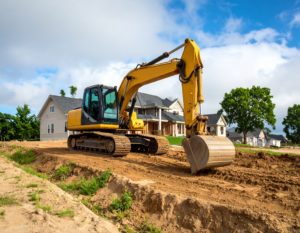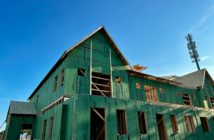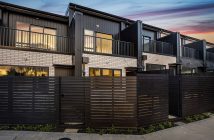Stats NZ has released its experimental dataset on construction timelines and completion rates, but Shane Martin, Principal Economist at MRCagney, points out that demolitions are still a missing piece of the puzzle

The dataset from Stats NZ tells us how many consented dwellings (i.e., theoretical dwellings) turn into completed dwellings (i.e., places people can live). The gist of that data is that across the country, at the median, about 93% of consented dwellings get completed, and they take roughly a year to complete once they’ve been consented.
Put another way, for every 1,000 dwellings consented, on average, we can expect about 930 completed dwellings total and in a about a year or so, roughly half of them will be completed. In greenfields areas, this means that we can expect a net addition of 930 dwellings to the housing stock for every 1,000 dwellings that get consented.
However, in areas where there is lots of brownfield redevelopment (like Auckland currently, and soon to be Wellington), calculations of how many consented dwellings get completed do not give us an accurate picture of the net gain to the housing stock. Why? Demolitions.
For instance, across West Auckland where I live, standalone homes are being bowled and replaced with 6 townhouses. This adds much needed housing to Auckland’s housing stock – but it doesn’t add 6 dwellings. Only 5 dwellings are added once you consider the house that got knocked down. And sometimes a house is knocked down and replaced one-for-one with another house. This adds zero houses to the housing stock, but counts as a new dwelling consented.
Unfortunately, demolitions are quite difficult to track accurately. In most cases, a consent is not needed to demolish a house, so there is no tracking of it there. There are alternative data sources, like new electricity connections, for instance, that give some view into this. But it’s imperfect. What would be better is if demolitions themselves were tracked.
Otherwise, we know how much of the new construction is getting completed. But we don’t know how much housing is actually being added to the housing stock. This makes it difficult to see how well the provision of additional housing is tracking with a growing population.
Take the example of Auckland adding 47,000 people in 2023. Those new people will require roughly 15,000 additional dwellings. During the same period, Auckland consented approximately 15,500 new dwellings. Of course, not all those dwellings will end up getting built, and our best guess, using the Stats NZ data, is that approximately 14,400 new dwellings might be completed. This means, we’re at least 600 dwellings short – and that’s before considering that somewhere between 65% and 75% of Auckland’s housing is being built in brownfields areas – areas where demolition of older standalone dwellings to make room for townhouses is quite common.
What we do not know is what the actual net addition to the housing stock will be. If they all followed the pattern of my example above where one house is demolished to make way for six townhouses, then the total number of additional dwellings from the 15,500 consented is likely to be around 12,000. This puts the shortage at 3,000 dwellings to accommodate the population growth.
But rather than the ratio of consented to additional dwellings being 6:5 like in this example, it could be 4:3 or 7:6, or 10:9. The point is – we don’t have necessarily have a great idea. And until we do, it will be difficult to monitor how well we’re providing housing for the growing population.
We can do a reasonable job estimating this using alternative data sources, and this is likely what will need to be done until proper demolitions data is collected. But it isn’t something we can just go look up. And until it is, councils around the country will likely have a tough time tracking how much housing they are adding.









